
Any gardener knows that having a familiarity with the creatures that live in their garden is crucial to raising healthy vegetables, beautiful flowers, and other pretty perfect plants. Everyone knows about the benefits that bugs and insects like worms, bees, and ladybugs bring to the garden as soil aerators, pollinators, and pest exterminators, respectively. Any gardener you ask will also have a rant cued up about the frustration of dealing with hungry rabbits, marauding deer, and interloping aphids. Less well known, however, are the pros and cons of the various lizards, frogs, and toads that are likely to call a garden home. These reptiles and amphibians love a blooming garden as much as their flying and furry friends. Depending on where you live in North America, what critters you should be on the lookout for will change. Floridians, for instance, will have a wide variety of colorful lizards to keep an eye out for. Gardeners braving the rocky soil and harsh winters of New England, on the other hand, only have to watch out for a handful of herpetological invaders that might weasel and worm their way into the garden.
Wherever you live, keeping track of the reptiles and amphibians in your garden is an important part of maintaining your plants’ overall health, and that of the surrounding environment. Knowing which frogs will eat pesky insects and which lizards will leave harmful deposits of waste will help you keep your garden flourishing and healthy for you, your friends, and all the animals in your yard to enjoy.
Lizards
While it can be hard to tell if the interloper in your garden is a lizard or a similar critter, like a salamander, true lizards are almost all beneficial to a garden environment. Lizards are carnivorous, so they are much more likely to munch on harmful pests than tasty greens. It is still good to know, though, what kinds of lizards have set up shop in your garden before you go about throwing open the doors and welcoming them in.
Skink
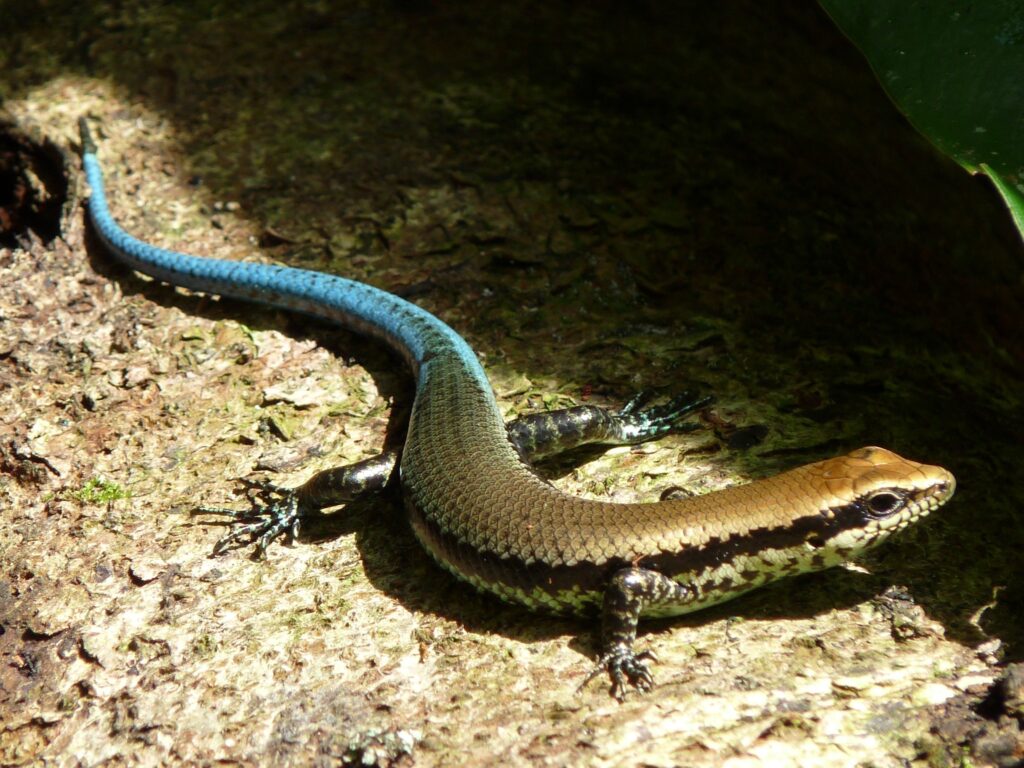
There are several types of skinks native to North America, including the five-lined skink, the northern and southern prairie skinks, and the ground skink. Various species of skink are native across all of the contiguous United States, and different and multiple species may be common depending on which region you live in. All skinks, regardless of species or region, are characterized by their short legs and all but nonexistent necks. Their colorings and marking will vary depending on which species you have, but none of them are likely to reach above eight inches in length. Skinks should be a very welcome visitor to your garden. Their widely varied diet encompasses just about every type of troublesome garden pest, including grasshoppers, snails, slugs, crickets, other insects, and even, occasionally, small mice. People looking to attract this helpful predator to their gardens can lay out a thick layer of moist leaf mulch, which will create a perfect environment for skinks to hide and nest. Leaning a stick into any available water sources will also make your garden welcoming for skinks, as it will enable them to climb into and out of the water source. Avoid any pesticides or harsh chemicals, which can sicken skinks and drive them away.
Green Anole
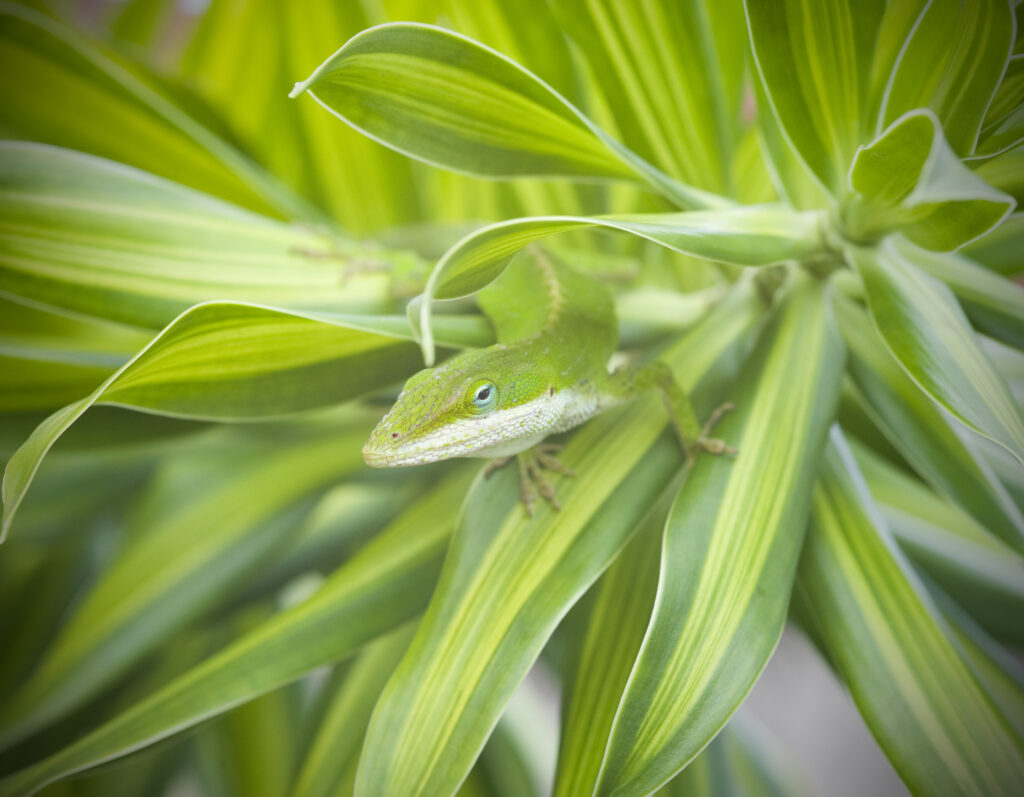
The green anole is often sold in pet stores as an American chameleon because it shares the chameleon’s ability to change color to camouflage with its background, but the two lizards are actually unrelated. The green or Carolina anole can range from bright green to dark brown. The lizards also have a dewlap or throat fan, which is bright red in males, who use it for mating, and white or pale pink in females. Anoles are slender and reach a maximum length of about eight inches. They love to climb and hang out high in trees and tall plants, but will also explore your garden at ground level or take a break in some low shrubs. This wide-ranging patrol means the green anole will catch and eat pests, such as grasshoppers, cockroaches, and beetles, in almost all areas of a garden. They have also been known to eat seeds, however, so they may be more of a pest than a feature during planting season. As their name suggests, Carolina anoles can be found in the Carolinas and throughout the southeastern United States.
Frogs & Toads
Frogs and toads are consummate insectivores, and contrary to all the pop culture depictions, they eat a lot more than just flies. Many detrimental insects will find your garden a much less hospitable place if it is home to some of the amphibians listed below. Be careful, though, not to let them take over your garden, as they can also munch on earthworms, ladybugs, and other creatures that gardeners consider friends rather than foes.
American Toad
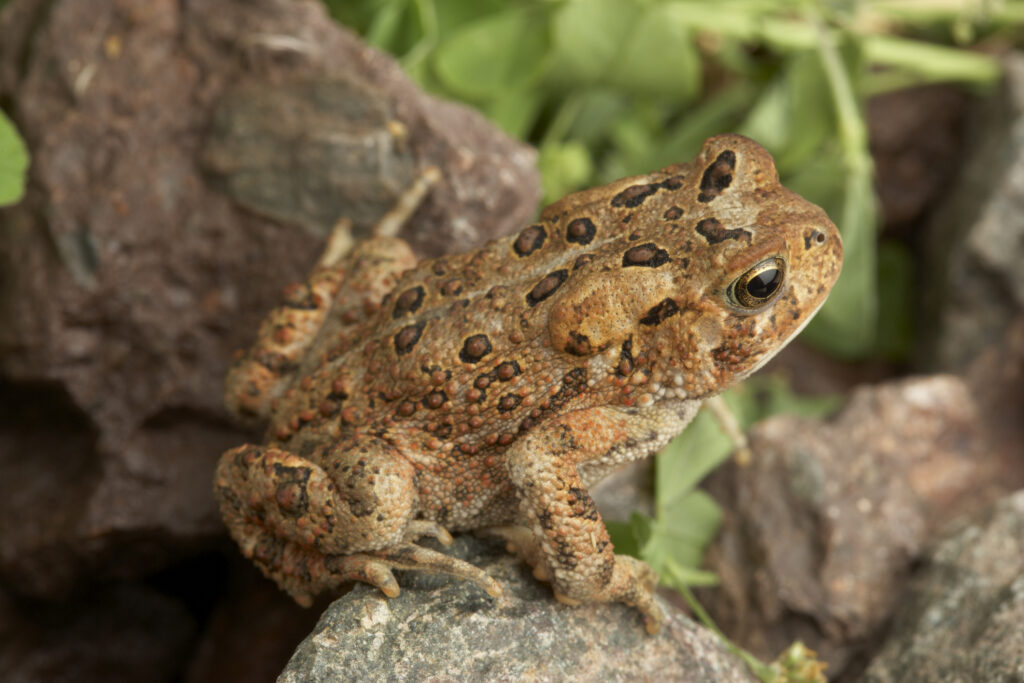
The American toad is indigenous to most of the eastern half of the United States, with a range bounded by the Mississippi River to the west and the Atlantic Ocean to the east. They do also avoid the southernmost reaches of that region and are not found in Florida, Louisiana, or most of Georgia and South Carolina. In the most southwestern corner of their range, gardeners are more likely to find the related but smaller American dwarf toad, which reaches a size of about two and a half inches to the standard toad’s three and a half to four. Both subspecies, though, are hugely beneficial to a garden. Their diet includes many of the insects and bugs gardeners most want to eliminate, like crickets, slugs, mealworms, and centipedes. It should be noted, however, that they can also prey on beneficial critters, like earthworms and spiders, so too large a population of American toads could become a problem. These toads will love a densely grown garden with a small pond or other permanent sources of water.
Grey Tree Frog
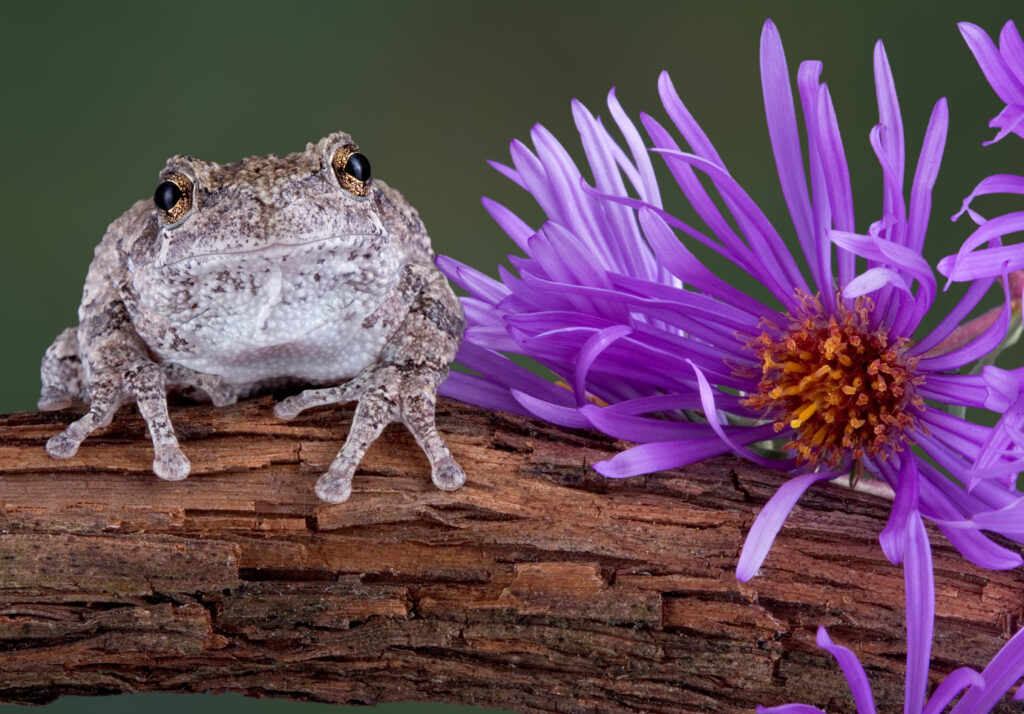
While their common name is the grey tree frog, the Latin name of this striking frog is Dryophytes Versicolor, which is indicative of the wide variety of colors these amphibians can sport. Most are, in their default state, indeed grey, but they can also be green, black, brown, or almost white; like chameleons, they change colors to most effectively camouflage with their surroundings. This may make them particularly difficult to spot if they have made your garden their home, but you should be grateful if they do. Unlike the other insectivores mentioned so far, grey tree frogs, unsurprisingly, make their homes higher up, in trees and other tall vegetation. This makes them a perfect complement to other ground-based lizards and frogs. The two animals will have relatively little competition for prey, as the tree frog will gobble up high-flying flies and mosquitoes, while the ground-dweller will focus on slugs and centipedes. Grey tree frogs make themselves at home across the northeastern United States and much of the Midwest, ranging from Maine into Virginia, Missouri, and Minnesota, as well as a little bit into eastern Oklahoma and Texas.
American Green Tree Frog

This bright green, two-and-a-half-inch tree frog is a close relative of and also the inverse to the grey tree frog, at least geographically speaking. The American green tree frog ranges across the southeastern United States, from east Texas to Delaware and the southern tip of Florida into southwestern Illinois. (The frog is also the official state amphibian of both Georgia and Louisiana.) Most gardeners (in the east, anyway) disappointed they will not be able to attract a grey tree frog to their greenhouses can probably aim for one of these flamboyant little guys instead. American green tree frogs love three things: water, climbing, and insects. A garden with a small pond, especially one with plentiful vegetation for them to hide in, and lots of tall plants for them to climb will be the perfect attractant for these vibrant insectivores. The insects, as all gardeners know, will supply themselves. The favorite foodstuffs of the American green tree frog are any particularly active insects, such as flies and mosquitoes.
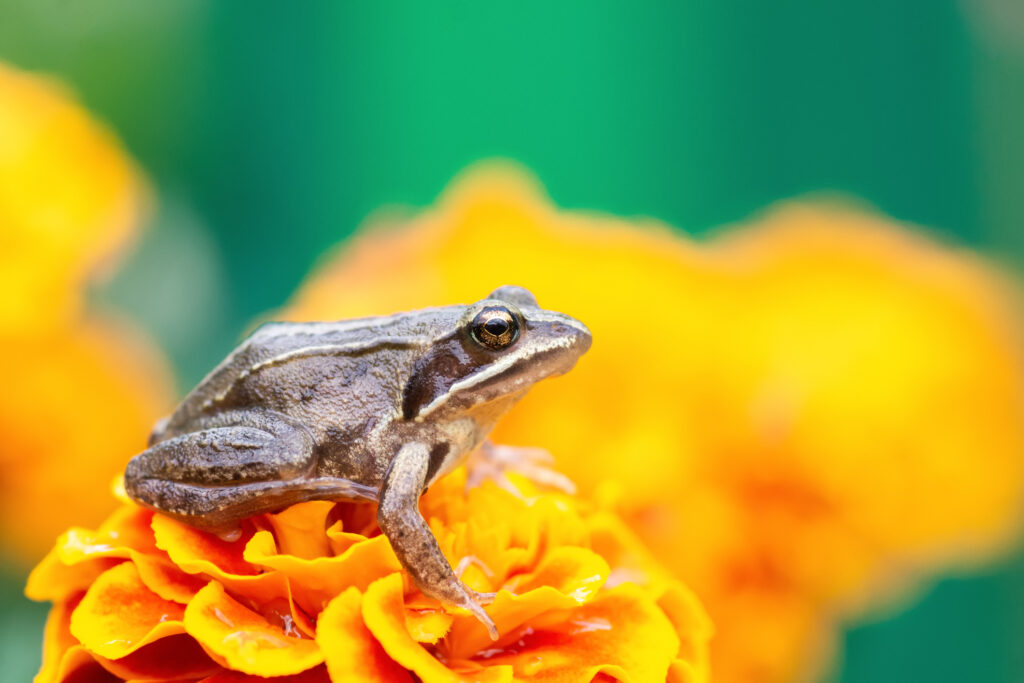
Gardeners often do not think of reptiles and amphibians when they are imagining their perfect garden ecosystem. However, these scaly, slimy friends are just as crucial to a diverse and healthy garden environment as the earthworms and rabbits we might usually think of. Their main benefit is as constant consumers of all the insects and bugs that are the bane of so many gardeners’ existence, but they are also beautiful and unique creatures that anyone would love to watch skitter, sit, and sing in their garden. Attracting a healthy population of reptiles and amphibians is often just a matter of researching the critters that are indigenous to your area and crafting a garden that will be a welcoming environment for them. After that, your work should be done, and you can simply sit back and watch the magic happen.

Other Recommended Reading

- 7 Tips To Attracting Reptiles, Toads, & Frogs To Your Garden
- 5 things Gardeners Should Know Before Getting A Chicken Coop
- Gardening With Chickens – Why Chickens and Gardens Just Make Sense
- How To Create A Bird-Friendly Garden

At Jung Seed Co, we strive to be your go-to guide for all your gardening needs. Our YouTube channel Jung Garden Center now includes our new video series All Things Green where our experts provide gardening tips for all levels of gardeners. When you need reliable gardening advice, turn to the trusted experts at Jung.
View our new catalog online or browse our website for your gardening favorites. To receive info on new products, exclusive deals, and specials, be sure to sign up for our weekly email. Join our Facebook page, to discuss all things gardening!
About the Author: This article was written by a guest writer. If you are interested in writing an article for the Jung Blog email us at – info@jungseed.com.